A return to Ukraine's pre-2014 borders is unrealistic. NATO membership for Ukraine is also off the table. Any future security guarantees must involve both European and non-European forces, but they will not include American troops and will not be protected under Article 5 of the North Atlantic Treaty.
This was the message delivered by US Secretary of Defense Pete Hegseth in a speech in Brussels on 12 February – a message that triggered a renewed push in Europe to bolster its own defence capabilities.
Speaking to leaders of the Ukraine Defence Contact Group, Hegseth made it clear that the United States could no longer serve as the backbone of Europe's defence.
"Safeguarding European security must fall to Europe's NATO members," Hegseth declared. "Europe must provide the overwhelming majority of both lethal and non-lethal aid to Ukraine." He urged European leaders to ramp up defence industrial production and to speak openly with citizens about the threats facing the continent.
His speech marked a decisive end to the post-World War II order in Europe, built on the assumption of American military protection.
Three weeks later, on 4 March, the European Union responded with a new initiative: ReArm Europe – a programme designed to strengthen Europe's defence posture not just in military terms, but industrially and technologically as well.
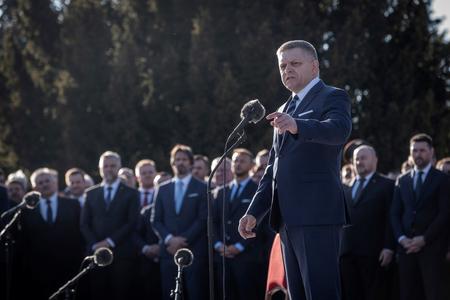
Within a fortnight, the initiative was rebranded as Readiness 2030, following objections from Italy and Spain. Italian Prime Minister Giorgia Meloni told Euronews the original name was "misleading" as it suggested an arms build-up, rather than a broader effort to strengthen defensive capabilities.
The reference to 2030 signals the year in which, according to analysts, Russia could once again be capable of launching a military attack on an EU or NATO member state.
For Slovakia, Readiness 2030 presents both obligations and opportunities. "Slovakia has a chance to become one of Europe's leaders in artillery systems and munitions," said Martin Sklenár, who was defence minister in the technocratic government of Ludovít Ódor and is now an expert at the think tank Globsec.
In addition to the armed forces, he sees it as an important signal to the European defence industry, which can now expect a more stable stream of orders – something that could also motivate investment in new production capacities.
Learning from Ukraine
Artillery, mentioned by Sklenár, also features in the European Defence White Paper – the foundational document of the Readiness 2030 initiative – which lists artillery systems and stockpiles of artillery ammunition as being among the top capabilities in which Europe must address existing shortfalls.
In addition to weapons systems, the paper also refers to the need to build up strategic reserves of artillery ammunition, components and manufacturing capacity to ensure the sustained operation of artillery forces.
The White Paper outlines seven defence priorities. Alongside artillery, it names air and missile defence, which should create a protective shield not only against aircraft but also against ballistic missiles, cruise missiles, hypersonic missiles, and drones.
The EU's White Paper on European Defence outlines seven key priorities, including:
Air and missile defence
Artillery systems
Ammunition and missile stocks
Drone and counter-drone systems
Military mobility
Artificial intelligence, quantum computing and electronic warfare
Protection of critical infrastructure
The document also reflects the fact that, during three years of full-scale war, Ukraine has become a testing ground for military technologies. Other sections highlight drone and counter-drone systems – including land, air, surface and underwater drones – which may be either remotely controlled or fully autonomous.
Another chapter focuses on military mobility, discussing a European network of land corridors, airfields, ports and supporting infrastructure that would allow for the rapid movement of military equipment across the continent.
In the section on artificial intelligence, quantum computing, and electronic warfare, the paper discusses the military application of AI, protection of the electromagnetic spectrum from exploitation or capture by enemy forces, and the development of offensive cyber capabilities.
"Virtually all the priorities of the Readiness 2030 programme overlap with the needs of the Slovak Armed Forces," former defence minister Jaroslav Naď told the SME daily.
"Air defence, electronic warfare capabilities, unmanned systems, intelligence capacities, heavy mechanised equipment and ammunition – these are all areas where we have a stake, and the programme could help us significantly," he added.
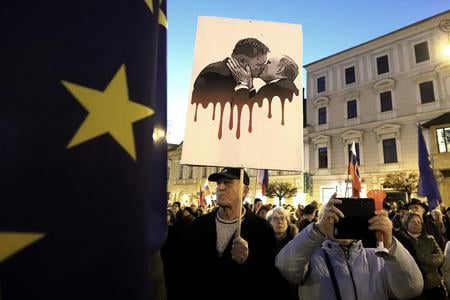
Not much money to go around
The main challenge facing Europe's security situation was summed up in an analysis by the influential Defense and Security Monitor blog. At the end of March, it pointed out that Russia is currently spending over 6 percent of its GDP on defence investments, and in the decade leading up to the war in Ukraine, it invested between 3 and 4 percent annually in its armed forces.
By contrast, looking at the EU as a whole, defence investment in 2024 still stood at less than 1.9 percent of collective GDP – even though defence spending had risen by 31 percent since 2021.
For Slovakia, as for other states, Readiness 2030 is expected to ease investment in defence by relaxing budgetary restrictions and introducing EU-backed loans.
Loosening the rules on budget deficits and national debt across the EU could make around €650 billion available. This is made possible by activating the so-called escape clause in the Stability and Growth Pact – an extraordinary measure the EU also triggered during the Covid-19 pandemic.
Without this clause, each member state is required to keep its national debt below 60 percent of GDP and its budget deficit under three percent, as part of sound fiscal management.
Slovakia's national debt currently stands at 59.28 percent of GDP, while the draft 2025 state budget projects a deficit of 4.72 percent of GDP, according to the website of the Statistical Office.
The Defense and Security Monitor analysis highlights a problem that applies to Slovakia as well. Several EU countries – including some of the largest – are failing to meet the Stability Pact criteria. The average national debt in the EU is around 80 percent of GDP, meaning there is limited room for manoeuvre, especially if increased defence spending is not to be offset by cuts in other areas.
In addition, the European Union plans to make a further €150 billion available in the form of joint loans backed by the EU. These funds are intended to support joint procurement among multiple European countries.
In the Readiness 2030 documents, this instrument is referred to as SAFE (Security Action for Europe).
Two percent only with an escape clause
Sklenár sees this €800-billion package as one of two major advantages for Slovakia. The other is regulatory: the EU is also aiming to streamline legislation to make it easier to operate in the defence sector. Under a consultation programme called the Defence Omnibus, both governments and companies were invited to flag the barriers they face. The Slovak government, however, has so far failed to submit any input.
By contrast, the Czech Defence Ministry confirmed it had submitted proposals to simplify procurement and access to EU funding. "There's little sign of any active engagement from Slovakia's Defence Ministry, industry groups or businesses," said Sklenár, who believes Slovakia's defence SMEs are at risk of missing out.
There is little sign of a coordinated national strategy. "The department responsible was effectively dismantled after Robert Kaliňák took over," said former minister Naď, who added that Slovakia is becoming increasingly isolated among its EU and NATO partners.
An annual progress report submitted to the government on 29 April confirms that Slovakia is requesting an exemption from EU fiscal rules. It expects to spend an average of 2.1 percent of GDP on defence between 2025 and 2028 – but this may fall short of emerging NATO targets. At the alliance’s June summit in The Hague, members are expected to agree to raise defence spending above the current 2 percent minimum. In Brussels, Hegseth suggested 5 percent – a threshold that not even the US currently meets.
According to an analysis by Georgetown University, Europe's readiness depends not only on money but political will. While some countries are meeting the 2 percent target, this is now seen as a floor, not a ceiling.
"Many European countries, such as Germany, must reach this level simply to restore their combat readiness before they can even begin to consider making larger military contributions to NATO," writes expert Tyler Koteskey in the analysis, which anticipates that the need to invest 3 percent of GDP will be voiced at the Hague summit of the alliance.
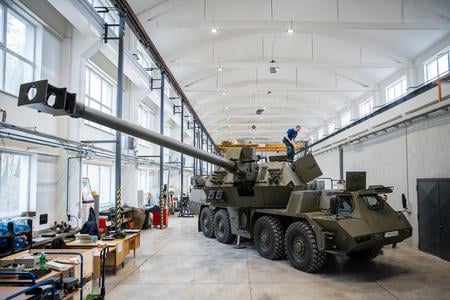
Slovakia could lead in howitzer production
Sklenár is concerned that neither the Slovak government nor its state-owned companies are approaching these opportunities proactively. He singles out Slovak-made Zuzana 2 howitzers in particular, which he says have a solid reputation abroad.
The former minister sees an opportunity here for Slovak firms to gain a strong foothold in the defence market. When it comes to howitzers, it's not just about supporting domestic manufacturers, but also about increasing Slovakia's artillery ammunition stockpiles. In his view, Slovakia has a chance to become one of the four leading howitzer suppliers in Europe.
However, according to Sklenár, Slovak companies are not accustomed to the administrative burden that comes with opportunities at the European level. A strong direct relationship with the Slovak state budget is simpler for them than a competitive environment made more complex by European legislation.
"Attempts often end in failure or limited success, which discourages them. They compare it to what they know best – direct contact with the Slovak Defence Ministry as a client," Sklenár says.
He also emphasises the need to invest in artificial intelligence, cybersecurity and, gradually, quantum technologies.
Tomáš Valášek, a former Slovak ambassador to NATO who is now an MP for the opposition party Progressive Slovakia, argues that there is no visible direction or communication from the government – not even with large companies, let alone with innovative small and medium-sized businesses.
"The opportunities are there – the question is whether the current government can turn them into new jobs," he told SME.
"If it were clear that the Slovak Defence Ministry was actively engaged, and was interested in giving Slovak firms a chance, it could take ownership of certain parts of this complex process."
A single market still does not exist
In an interview with SME, Sklenár also highlighted the fact that arms manufacturers continue to face problems that businesses in other sectors used to complain about before Slovakia joined the European Union.
"For example, companies face complications and costs because they have to certify every product separately for each EU member state. For instance, 155mm ammunition cannot be supplied to countries where it has not been certified. The Defence Ministry could help here by identifying specific provisions that should be amended," he said.
He noted that other countries and companies are already working on this and expressed hope that Slovak firms could benefit from that momentum.
He considers the introduction of a genuine single market – meaning EU-wide certification of defence goods – to be one of the steps the Union will have to take to stimulate the defence market. He also believes the EU must re-examine whether import and export licences for defence products between member states are still necessary.
"Countries want to maintain control over these goods, but perhaps now is the time to consider the added value that would come from abolishing such licences – much in the same way that we don't require licences for the export of other goods," Sklenár says.
What matters, he argues, is that countries can rely on the principle that if a product is certified in one member state, others can accept it. What currently applies to ordinary goods should also apply to defence products.
"For example, when an air defence system is manufactured in Germany and needs to be delivered to Slovakia, an export licence must be issued in Germany, and an import licence must be obtained in Slovakia," Sklenár illustrates. Such restrictions, he argues, should be eliminated within the single market, with export controls applying only to shipments outside the EU.
Within the EU, the process could be simplified by shifting to a system where the transfer of military goods is merely notified, rather than subject to approval.
"This is especially problematic for spare parts. Sweden is delivering CV90 tracked vehicles to Slovakia, but for every single spare part shipped over the vehicle's lifecycle, the company must request an export licence," Sklenár says.
This does not necessarily apply only to weapons, but also to non-lethal components, such as the tracks. "That no longer reflects the times," the former defence minister comments.
At the end of the year, the European Commission is expected to unveil another proposal aimed at simplifying the movement of military units across Europe. "So that entire units can participate in exercises without spending days simply moving from Germany to the Baltics."
"Many more legislative changes are coming. We need to be involved now if we want to help shape them – because if we leave it to others, it will be shaped by them," said ex-minister Sklenár.
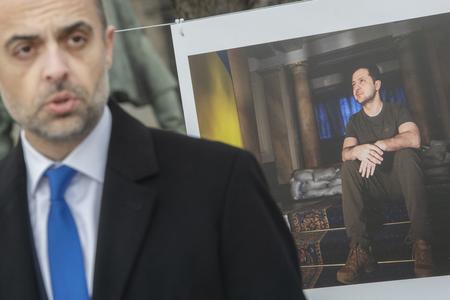
Can it be spent on hospitals?
Shortly after the launch of the Readiness 2030 initiative, a debate began in Slovakia over whether the funding could be used for investments that are not specifically military in nature, but are still related to national defence.
This could include transport infrastructure, such as strengthening bridges, motorways or railways to allow for the movement of heavy military equipment. The European Defence White Paper also accounts for investment in dual-use infrastructure. However, it does not explicitly mention, for example, hospitals.
"All countries are in the same situation as Slovakia. They have to increase defence spending – not because they chose to, but because the circumstances demand it. At the same time, they are under strong pressure to consolidate their public finances. So they are searching for the best ways to avoid giving up fiscal consolidation or the social programmes citizens have grown used to, while still finding the money to strengthen defence," says Sklenár.
He notes that for some projects which can enhance resilience – such as roads or hospitals – there are already European structural or cohesion funds available, or money from the Recovery Plan.
"If Slovakia decides not to finance these projects from European sources, but instead from the Defence Ministry's budget, we are depriving the armed forces of value they could otherwise gain from that same budget," he says.
Slovakia looks east, businesses look west
One of the risks associated with Readiness 2030 in Slovakia is the "policy in all four directions" pursued by the government of Robert Fico.
In practice, this means Slovakia is perceived as a pro-Russian country, its relations with allies – including its closest ones – are deteriorating, and Slovak officials, led by the prime minister, are cultivating close ties with Moscow.
Prime Minister Fico has publicly questioned the need to increase defence spending. Meanwhile, as SME has reported, the company Czechoslovak Group, owned by Czech entrepreneur Michal Strnad, is building a complete production chain for large-calibre ammunition in Slovakia.
By 2027, the company's capacity is expected to increase to 330,000 rounds of ammunition per year, up from the 120,000 planned for 2025.
This would make it the second-largest ammunition producer in Europe, after Germany's Rheinmetall. What is especially significant is that Czechoslovak Group would be able to produce large-calibre ammunition entirely independently, without relying on other companies.
The firm has already secured a European grant to begin producing trinitrotoluene (TNT) at a Hellenic Defence Systems plant in Greece.
Slovakia's stance on Readiness 2030, however, is moving in the opposite direction. Tomáš Valášek points out that "Robert Fico may have formally endorsed ReArm Europe at the EU summit in early March, but just days later, all MEPs from [Fico's party] Smer and [its governing coalition] partner Hlas voted against support for ReArm Europe in the European Parliament."
Valášek sees this as a serious risk for Slovakia – a lack of political will to support its own applications. "There will be many contenders for money from the new European funds, and our government is widely seen by other EU member states as unreliable, populist, even pro-Russian," he says.
"Other countries' ministers may well look askance at their Slovak counterparts when they come lobbying for funds from a programme their own MEPs voted against. There is also the question of whether they will be willing to move part of their strategically important defence production to a country they are not sure would even take the right side in the event of a conflict with Russia," he said.
Slovakia's perceived unreliability as an ally could also manifest in another aspect of Readiness 2030, highlighted in the Georgetown University analysis.
The report discusses the potential of regional alliances within NATO. European countries could deepen their cooperation, improve its quality, and strengthen joint planning and command structures.
It cites the Nordic countries as a successful example, particularly following Sweden and Finland's accession to NATO. The Nordic Defence Cooperation (NORDEFCO) has since gained new importance – for example, the combined air forces of Denmark, Finland, Sweden, Norway and Iceland now outnumber the British Royal Air Force.
The university notes that similar cooperation could bring the Baltic states, Poland and Germany closer together.
However, it stresses the importance of keeping a clear strategic goal in mind: building credible deterrence against Russia.
The Eastern Frontier Initiative
This article was written in the framework of The Eastern Frontier Initiative (TEFI) project. TEFI is a collaboration of independent publishers from Central and Eastern Europe, to foster common thinking and cooperation on European security issues in the region. The project aims to promote knowledge sharing in the European press and contribute to a more resilient European democracy.
Members of the consortium are 444 (Hungary), Gazeta Wyborcza (Poland), SME (Slovakia), PressOne (Romania), and Bellingcat (The Netherlands).The TEFI project is co-financed by the European Union.
Views and opinions expressed are however those of the author(s) only and do not necessarily reflect those of the European Union or the European Education and Culture Executive Agency (EACEA). Neither the European Union nor EACEA can be held responsible for them.

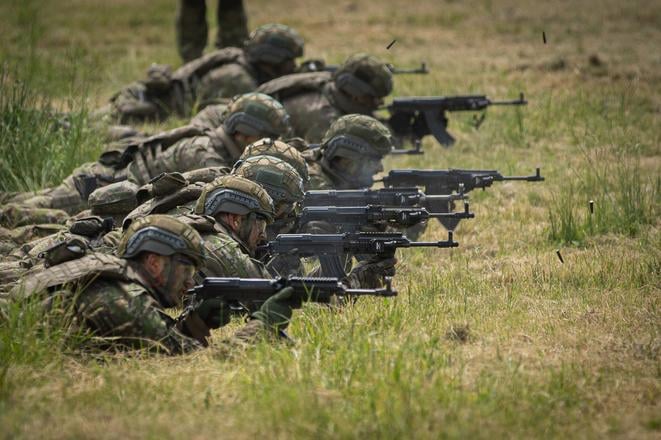 A demonstration by Slovakia's armed forces during celebrations held in Pieštany in 2025 to mark the 80th anniversary of the end of WWII. (source: Marko Erd)
A demonstration by Slovakia's armed forces during celebrations held in Pieštany in 2025 to mark the 80th anniversary of the end of WWII. (source: Marko Erd)
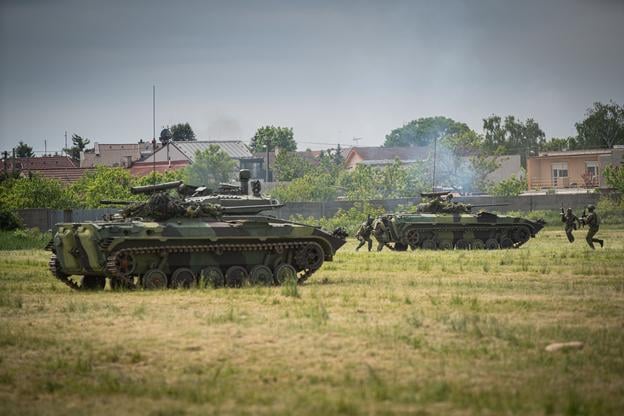 A demonstration by Slovakia's armed forces during celebrations held in Pieštany in 2025 to mark the 80th anniversary of the end of WWII. (source: Marko Erd)
A demonstration by Slovakia's armed forces during celebrations held in Pieštany in 2025 to mark the 80th anniversary of the end of WWII. (source: Marko Erd)
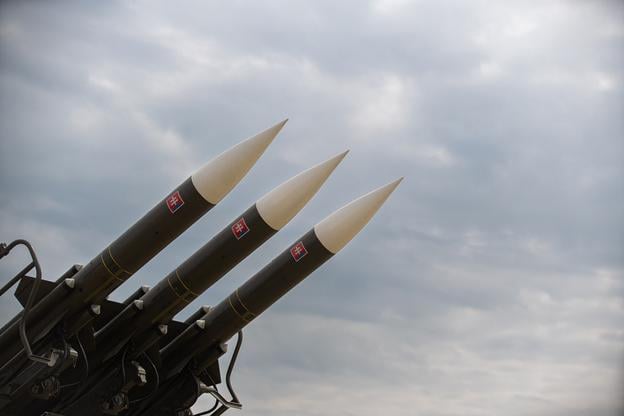 A demonstration by Slovakia's armed forces during celebrations held in Pieštany in 2025 to mark the 80th anniversary of the end of WWII. (source: Marko Erd)
A demonstration by Slovakia's armed forces during celebrations held in Pieštany in 2025 to mark the 80th anniversary of the end of WWII. (source: Marko Erd)
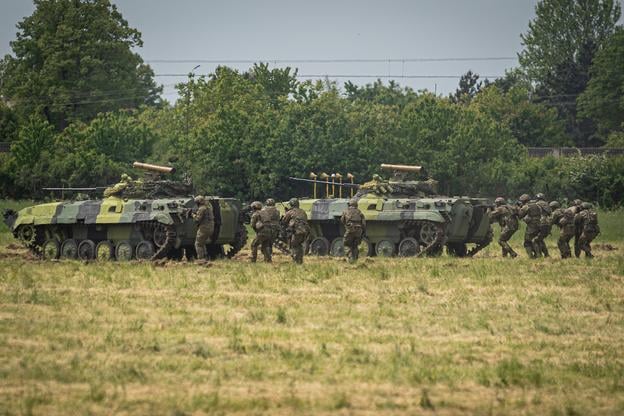 A demonstration by Slovakia's armed forces during celebrations held in Pieštany in 2025 to mark the 80th anniversary of the end of WWII. (source: Marko Erd)
A demonstration by Slovakia's armed forces during celebrations held in Pieštany in 2025 to mark the 80th anniversary of the end of WWII. (source: Marko Erd)
 A demonstration by Slovakia's armed forces during celebrations held in Pieštany in 2025 to mark the 80th anniversary of the end of WWII. (source: Marko Erd)
A demonstration by Slovakia's armed forces during celebrations held in Pieštany in 2025 to mark the 80th anniversary of the end of WWII. (source: Marko Erd)
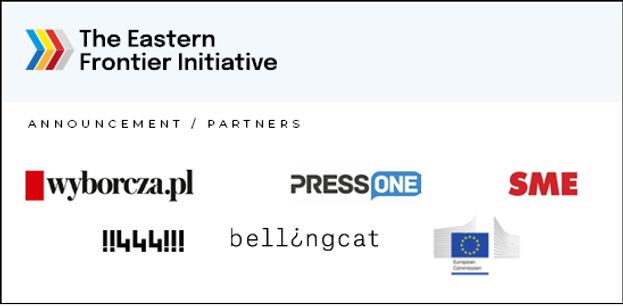 (source: TEFI)
(source: TEFI)